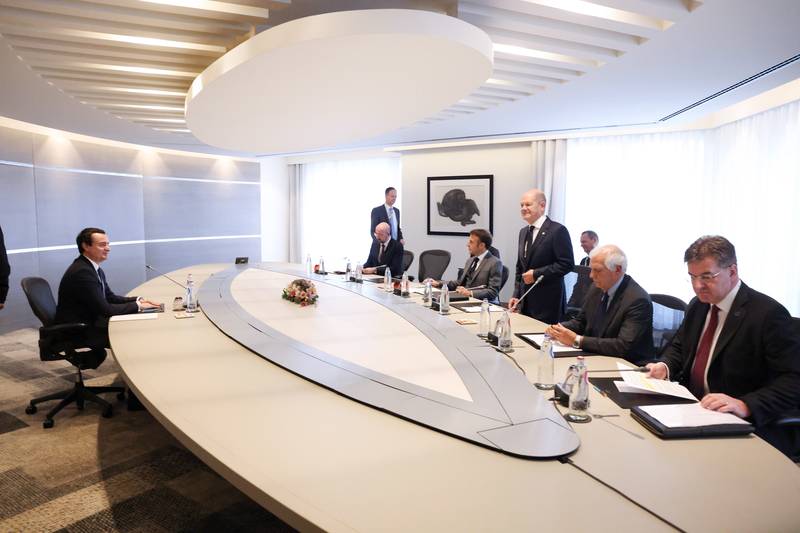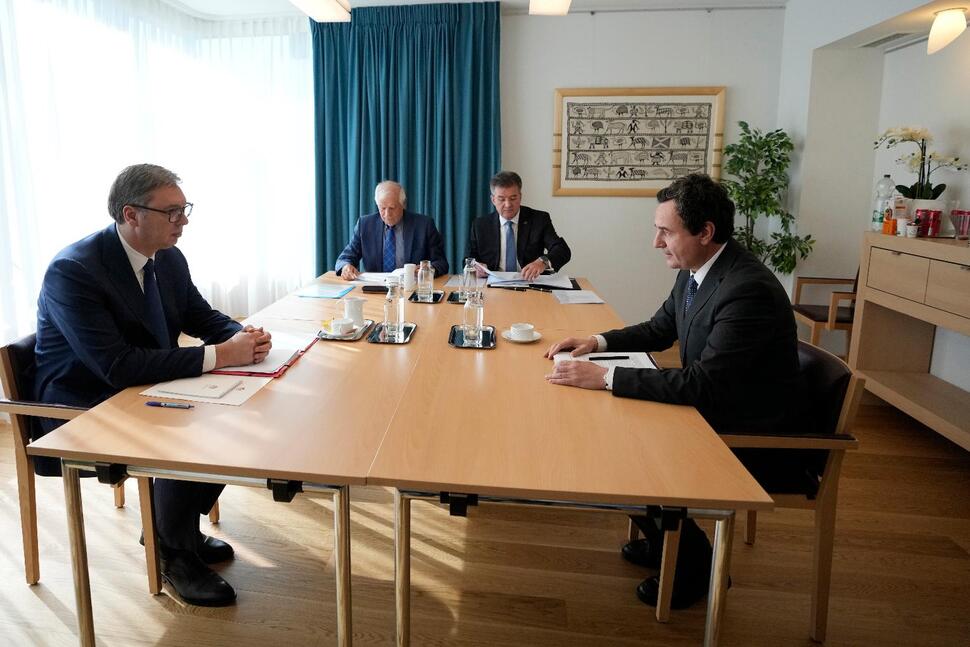Freedom of Movement
Kosovo and Serbia reached the Agreement on the Freedom of Movement on 2 July 2011. The agreement enabled citizens to travel freely within or through the territory of the other.
Accordingly, parties made some temporary arrangements of accepting each other’s documents, vehicle insurances and plates.
Initially, the sides agreed that:
- Citizens could cross the border with a simple ID card, and a written ‘entry/exit’ document that is issued at the border.
- Citizens of each party would have to purchase vehicle insurance to travel to the territory of the other (more than 100 euro/month for Serbia and 80 Euro/month for Kosovo). This, because Kosovo, unlike Serbia, is not part of the Green Card System.
- They would accept each-others’ driving licenses.
- And the validity of KS vehicle plates was extended for an initial period of five years, while the RKS vehicle license plates had to be replaced with the temporary ones when entering Serbian territory.
Initially, in 2011, the agreement was implemented in only two transit points through Serbia’s territory, one between Serbia and Hungary (Horgoš – Röszke) and one between Serbia and Croatia (Batrovci-Bajakovo). In 2014, the agreement was operational at six other transit points from Serbia to third countries. This includes two airports in Serbia (Belgrade and Niš) and four other transit points: Šid-Tovarnik, crossing point between Serbia- Croatia; Kelebia-Tompa, crossing point between Serbia- Hungary; Preševo-Tabanovce, crossing point between Serbia- North Macedonia; and Gradinje-Kalotina, crossing point between Serbia- Bulgaria. Prior to this agreement, respectively from 2008, Kosovo citizens were not allowed to travel to/through Serbia unless they had a Serbian or UNMIK ID/passport. They could neither enter Serbian territory with RKS vehicle plates. Instead, were required to buy three-day provisional plates and 15-days vehicle insurance. Similarly, Serbs from the northern municipalities faced many obstacles to travel to the southern part, due to the unwillingness to acquire Kosovo- issued identification documents.
Prior to this agreement, respectively from 2008, Kosovo citizens were not allowed to travel to/through Serbia unless they had a Serbian or UNMIK ID/passport. They could neither enter Serbian territory with RKS vehicle plates. Instead, were required to buy three-day provisional plates and 15-days vehicle insurance. Similarly, Serbs from the northern municipalities faced many obstacles to travel to the southern part, due to the unwillingness to acquire Kosovo- issued identification documents.
The conclusion of this agreement marked a major success for both parties as it was contributing to the normalization of the situation among them. However, at first, it was difficult to implement this agreement. In the same month that parties reached the agreement, violence flared in the north of Kosovo, because Kosovo police tried to take control of the two border points, Bërnjak/Bernjak and Jarinjë/Jarinje.
By November 2011, parties signed the operational conclusions, manifesting their commitment to the improvement of the situation.
The agreement, so far, has had many benefits:
- It increased the number of passengers and cars that traveled from Kosovo to or through Serbia; From 2011 to 2012 the number increased by over 100,000.
- It shortened the distance and reduced costs of traveling to European countries; which particularly benefited our diaspora. Now they do not need to use other transit options, which are more distant and expensive, but rather use Serbia as a transit. For instance, for a trip from Kosovo (Pristina) to Germany (Berlin) via Serbia, the distance is 1747 km, whereas via Albania the distance is 2075 and via Croatia-Montenegro the distance is 2168 plus the expenses for a ferryboat in the case of Albania. According to the official statistics, since the implementation of this agreement from 2011 to 2018, there is an enormous increase in people and cars using the transit route via Serbia.
 Established more orders regarding the vehicle plates in the north. Serbian vehicle plates bearing the name of Kosovo cities are gradually being removed and around 8000 Kosovo Serbs have registered their cars with Kosovo plates.
Established more orders regarding the vehicle plates in the north. Serbian vehicle plates bearing the name of Kosovo cities are gradually being removed and around 8000 Kosovo Serbs have registered their cars with Kosovo plates.- The majority of Serbs from north Kosovo acquired Kosovo personal documents, including IDs and driver licenses; Estimates show that until 2019, around 87.20% of residents in the north have Kosovo IDs.
- Increased the integration of northern municipalities and the contacts between Serbs and Albanians as citizens from the northern municipalities began to travel more frequently to southern Kosovo for trade and business purposes.
However, many obstacles remain:
- Serbia still does not recognize RKS vehicle plates. Kosovo citizens have to change them to temporary plates; which costs time (at least 30 minutes to undergo the procedure) and money (every temporary plate has a monetary reimbursement).
- Similarly, the issuance of the entry/exit document at the border, which Serbia has been applying since the beginning, creates unnecessary long waiting hours; the only improvement during all this time is the extended validity from 15 to 60 days.
- In some instances, obstacles appear in the form of preventing the freedom of movement for political or other reasons. For instance, Serbia prevents third-country nationals to enter Serbia from Kosovo.
- And Serbia’s vehicle plates bearing the naming of Kosovo cities are still in circulation in northern Kosovo (KM, PR, PZ).
By 25 June 2015, Serbia and Kosovo, with the facilitation of the Council of Bureaux, agreed on the mutual recognition of vehicle insurance. The implementation of this agreement began on 12 August 2015. Since then, the drivers of Kosovo-registered cars, need to add Serbia to their insurance plan wherever they purchase their insurance for Kosovo.
A year later, on 14 September 2016, Kosovo and Serbia agreed to place a sticker to their RKS and SRB vehicle plates, covering this way the relevant parts of their vehicle plates when entering each-other’s territory. This measure would identically apply to both sides and would contribute to cutting back the waiting hours in the Serbian border (for Kosovo citizens with RKS vehicle plates), however it still remains unimplemented. Kosovo and Serbia also agreed to extend the validity of the KS license plate for a period of five years.
Today, although the citizens can- in principle- move freely within or through the territory of the other, some challenges persist and interfere with the full normalization. Many Albanians hesitate to travel to or through the territory of Serbia just as many Serbians do not feel comfortable traveling to or through the territory of Kosovo.
Agreements in PDF
- Year: 2011




